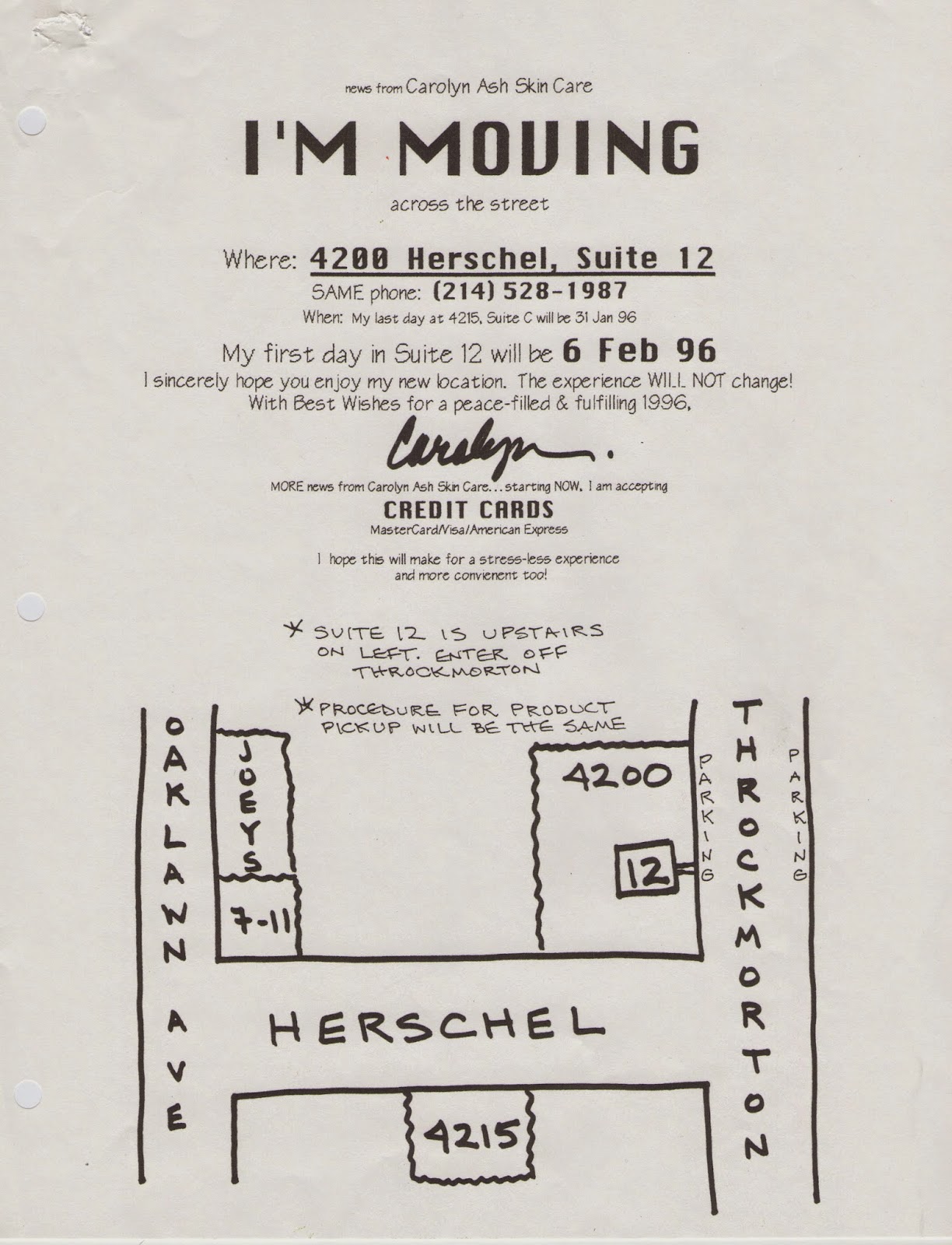For obvious reasons, it’s
a good idea to send an announcement of an office move. It serves a few
more purposes than you may think. First, of course, it puts in your
client’s hands the new address of your new office location. Of course, you’ll have your business phone number on the card as well. Receiving this card may jog your client’s memory that it’s time to come in for a facial.
 |
| “I’m moving” PC front |
 |
| “I’m moving” PC back |
An
added benefit of sending these cards is you will get a certain
percentage back, “unable to forward” or saying it is the wrong address. This gives you
an opportunity to call your client and get their information updated.
They probably still want to come in, but have moved and forgotten to let
you know. Now you can get their updated information and can reconnect with this client, possibly
booking an appointment while you have them on the phone.
These postcards were printed at vistaprint.com.
Of course, I also recommend sending an email to all of your clients about your move. Getting this important information out in as many ways as possible is recommended. Here is an email I sent out several years ago for my last office move:
Here is an old (1995 or '96) snail mail announcement I sent out when I moved across the street (to a much better office). Announcements like these were created before computers and the Internet were readily used and certainly years before a company like vistaprint! I also was letting my clients know I would now be able to take credit cards, something—back then—I had to wait a bit before the merchant companies would give a new business. Now anyone can get credit card availability.
Of course, I also recommend sending an email to all of your clients about your move. Getting this important information out in as many ways as possible is recommended. Here is an email I sent out several years ago for my last office move:
Here is an old (1995 or '96) snail mail announcement I sent out when I moved across the street (to a much better office). Announcements like these were created before computers and the Internet were readily used and certainly years before a company like vistaprint! I also was letting my clients know I would now be able to take credit cards, something—back then—I had to wait a bit before the merchant companies would give a new business. Now anyone can get credit card availability.





























